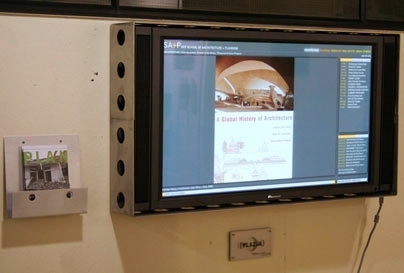The School of Architecture and Planning is seeking submissions for its PLAZmA Digital Gallery, an electronic showcase of SA+P work and events displayed on nine large monitors set up in the school's public areas in Buildings 5, 7, 9, 10, W31, N52 and E15, the MIT Media Lab.
PLAZmA content runs continuously throughout the day, seven days a week. Past shows have featured samples of award-winning student artwork; images from an urban planning practicum in India; images from exhibits in MIT campus galleries; and images from a symposium on adaptive technologies.
Content is aimed at the interests of the SA+P community and includes faculty and student work, current research and fieldwork, material from school publications and galleries, and a calendar of upcoming events.
The school is seeking presentations created specifically for PLAZmA, as well as collections of stills and videos that come from research and schoolwork. Of particular interest is content that highlights collaborations among the School of Architecture's five divisions, with other departments at MIT, and with public and private institutions in the United States and abroad. Those who might be interested in curating PLAZmA shows on themes of their own choosing should also submit ideas.
The School of Architecture and Planning is comprised of five main divisions--the Department of Architecture, the Department of Urban Studies and Planning, the MIT Media Laboratory, the Center for Real Estate and the Center for Advanced Visual Studies.
For information on how to submit content and tips on what makes a good PLAZmA show, visit sap.mit.edu/resources/galleries/plazma_digital_gallery/.
A version of this article appeared in MIT Tech Talk on November 28, 2007 (download PDF).






